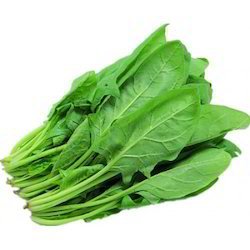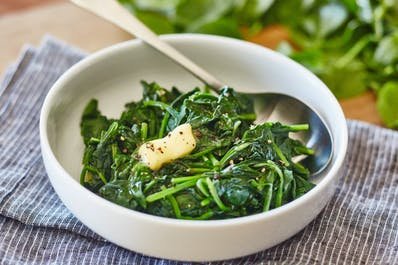Spinach

Spinach is a member of the Amaranthaceae family and its scientific name is Spinacia oleracea . It is a green, leafy vegetable that is cheap and affordable for everyone. It is a rich source of minerals , vitamins , pigments, and phytonutrients. All of these together make spinach very beneficial for a number of vital processes.
Spinach can be eaten raw as a part of many salads, and it can also be cooked or sauteed down into a reduced form. This can be eaten as a side dish vegetable or added in a number of recipes for soups, stews, and casseroles.

Spinach Nutrition Facts
The various health benefits of spinach are due to the presence of minerals, vitamins, pigments, and phytonutrients, including
potassium , manganese , zinc , magnesium,
iron , and calcium. Spinach is a green vegetable which has a very wide distribution. It can be grown as a backyard crop or bought from the market at affordable prices. It is a source of vitamins like folate, niacin, vitamin A , vitamin B6 , vitamin C , vitamin K , and contains traces of the rest of the essential vitamins.
Spinach has many important roles to play in maintaining a healthy body; the various health benefits of spinach include the following:
1.Improves Eyesight
2.Treats Macular Degeneration
3.Treats Hemophilia
4.Maintains Blood Pressure
5.Protects Skin
6.Boosts Metabolism etc.
There are important nutritional benefits to be had from many different ways of incorporating spinach into your meal plan.